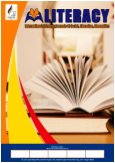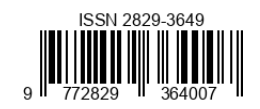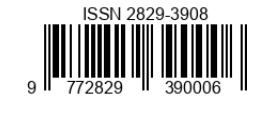Technology-Based Islamic Religious Education: Literature Analysis of Trends, Challenges, and Opportunities
DOI:
https://doi.org/10.56910/literacy.v4i2.2396Keywords:
Digital Learning, Educational Technology, Islamic Religious Education, Literature ReviewAbstract
This study focuses on exploring technology-based Islamic religious education (PAI) and analyzing the literature related to trends, challenges, and opportunities for technology integration in PAI learning. The aim is to identify and analyze the literature related to technology implementation in PAI and provide recommendations for development. A systematic literature review method was used to analyze 15 articles published between 2020 and 2025. The results show that technologies such as mobile applications and e-learning platforms have great potential to improve the effectiveness of PAI learning; however, significant challenges remain, including limited infrastructure and lack of educator training. This literature synthesis highlights the importance of collaboration between educators, technology developers, and educational institutions to overcome these barriers. In conclusion, integrating technology into PAI learning can significantly improve the quality of education, but a number of challenges need to be considered to ensure effective and sustainable implementation.
References
A. Triantafyllou, S., “Constructivist Learning Environments,” Proc. of the 5th Int. Conf. on Advanced Research in Teaching and Education, GLOBALKS, 2022. [Online]. Available: https://doi.org/10.33422/5th.icate.2022.04.10
A. Tamami, Murhayati, and Zaitun, “Innovation of Islamic Religious Education Learning Media Based on Technology,” Indonesian Research Journal on Education, vol. 4, no. 4, pp. 2412–2419, 2024. [Online]. Available: https://doi.org/10.31004/irje.v4i4.1654
Á. A. Jiménez Sierra, J. M. Ortega Iglesias, J. Cabero-Almenara, and A. Palacios-Rodríguez, “Development of the teacher's technological pedagogical content knowledge (TPACK) from the Lesson Study: A systematic review,” Frontiers in Education, vol. 8, 2023. [Online]. Available: https://doi.org/10.3389/feduc.2023.1078913
A. Rachmawati and E. F. Rusydiyah, “Implementation of E-learning Based Learning in Islamic Religious Education Subjects,” Indonesian Journal of Islamic Education, vol. 5, no. 1, pp. 1–14, 2020. [Online]. Available: https://doi.org/10.35316/jpii.v5i1.223
A. Salsabila, M. L. N. Hanifan, M. I. Mahmuda, M. A. Nur Tajuddin, and A. Pratiwi, “The Influence of Technological Development on Islamic Education,” Journal on Education, vol. 5, no. 2, pp. 3268–3275, 2023. [Online]. Available: https://doi.org/10.31004/joe.v5i2.995
A. Zed, Library Research Methods, Jakarta: Yayasan Obor Indonesia, 2004.
B. Subagiya, “Library research in Islamic Education research,” Aug. 22, 2023. [Online]. Available: https://doi.org/10.31219/osf.io/zbc9g
D. Alimjon and M. S. Sabri, “Methods of using cloud technologies in Islamic education institutions,” International Journal of Innovations in Engineering Research and Technology, vol. 7, no. 5, pp. 89–100, 2020.
D. Yansyah, D. Sunandar, Zaenuri, R. Antoni, and S. Hati, “Application of Digital Technology in Islamic Religious Education Learning,” Journal on Education, vol. 7, no. 2, 2025.
E. Wahyuni and D. Hidayati, “Teacher Readiness for Technology-Based Learning,” Journal of Education and Counseling (JPDK), vol. 4, no. 6, pp. 11238–11247, 2022. [Online]. Available: https://doi.org/10.31004/jpdk.v4i6.10231
F. Sarinda, Martina, D. Noviani, and Hilmin, “Islamic Religious Education Based on Artificial Intelligence (AI) Technology,” Journal of Educational and Cultural Research Studies, vol. 1, no. 4, pp. 103–111, 2023. [Online]. Available: https://doi.org/10.59031/jkppk.v1i4.268
M. Agus Nurohman, W. Kurniawan, and D. Andrianto, “Innovation in Islamic Education to Develop the National Curriculum Towards the Concept of Local Genius 6.0 Internet of Things (IoT),” Crossroad Research Journal, pp. 99–117, 2024. [Online]. Available: https://doi.org/10.61402/crj.v1i4.178
M. I. Saputra and M. C. Syahputra, “Instilling Digital Literacy Understanding in Islamic Religious Education Learning,” Journal of Islamic Education, vol. 12, no. 2, 2021. [Online]. Available: https://doi.org/10.24042/atjpi.v12i2.11269
M. Miftahul Huda and I. Suwahyu, “The Role of Artificial Intelligence (AI) in Islamic Religious Education Learning,” Islamic Reference: Journal of Islamic Studies, vol. 2, no. 2, pp. 53–61, 2024. [Online]. Available: https://doi.org/10.61220/ri.v2i2.005
N. Nellalucky, “The Development of Technology in the Perspective of Islamic Religious Education,” SUMUR - Journal of Social Humanities, vol. 2, no. 1, pp. 1–5, 2024. [Online]. Available: https://doi.org/10.58794/sumur.v2i1.602
R. Resti, R. A. Wati, S. Ma’Arif, and S. Syarifuddin, “Utilization of Technology-Based Learning Media as a Tool to Improve Elementary School Students' Digital Literacy Skills,” Al Madrasah Journal of Elementary Madrasah Education, vol. 8, no. 3, p. 1145, 2024. [Online]. Available: https://doi.org/10.35931/am.v8i3.3563
R. Zulmi, A. P. Noza, R. A. Wandira, and G. Gusmaneli, “Islamic Education Based on Digitalization,” Journal of Islamic Religious Education and Management, vol. 2, no. 2, pp. 192–205, 2024. [Online]. Available: https://doi.org/10.61132/jmpai.v2i2.181
S. F. Shodiq, “Utilization of E-Learning in Islamic Religious Education Learning,” EDUKATIF: Journal of Educational Sciences, vol. 5, no. 2, pp. 983–996, 2023. [Online]. Available: https://doi.org/10.31004/edukatif.v5i2.4891
S. Jamil, “Technology and Islamic Education: Opportunities and Challenges in the Digital Era,” Wistara: Journal of Language and Literature Education, vol. 3, no. 1, pp. 122–126, 2022. [Online]. Available: https://doi.org/10.23969/wistara.v3i1.11239
S. A. Wandansari, “Preliminary Study of the Integration of Big Data to Answer the Challenges of Islamic Education in the Technological Age,” IJID (International Journal on Informatics for Development), vol. 10, no. 2, pp. 122–131, 2022. [Online]. Available: https://doi.org/10.14421/ijid.2021.3319
U. H. Munandar, M. Maman, A. Nurasa, S. Supiana, and Q. Y. Zaqiah, “Creating Educational Technology and Its Implementation in Islamic Religious Education Learning,” Edumaspul: Journal of Education, vol. 6, no. 1, pp. 1239–1247, 2022. [Online]. Available: https://doi.org/10.33487/edumaspul.v6i1.3557
W. I. Winarti, “Utilization of Gadgets to Increase Students' Interest and Understanding in Islamic Religious Education,” Sasana, vol. 3, no. 2, pp. 185–191, 2025. [Online]. Available: https://doi.org/10.56854/sasana.v3i2.456
B. Baharuddin, S. Sahidin, A. Kholilah, and F. A. Yanuar, “Islamic Education in the Era of Artificial Intelligence: Building a Civilization Based on Ethics and Technology in Indonesia,” JIIP - Scientific Journal of Educational Sciences, vol. 8, no. 4, pp. 3782–3791, 2025. [Online]. Available: https://doi.org/10.54371/jiip.v8i4.7432
Downloads
Published
How to Cite
Issue
Section
License
Copyright (c) 2025 LITERACY : International Scientific Journals of Social, Education, Humanities

This work is licensed under a Creative Commons Attribution-ShareAlike 4.0 International License.







